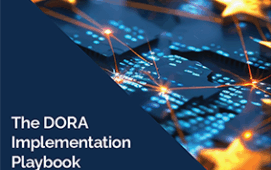The US Consolidated Audit Trail (CAT) is a broad, detailed and revolutionary regulation mandated by the Securities and Exchange Commission (SEC) and due to come into force in 2018. Its data requirement surpasses that of its predecessor, the Order Audit Trail System (OATS), and presents challenges around the reporting of correct customer and account data.
The status of the CAT, market participants’ readiness to comply, and the data management challenges of compliance were discussed during a recent A-Team Group webinar. The webinar – Learning from Markets in Financial Instruments Directive II (MiFID II) for CAT Reporting and Data Management – was moderated by A-Team editor Sarah Underwood and joined by Nagaraj Swaminathan, executive director at Ernst & Young; David Emero, vice president, Americas Regulatory Operations Group at Goldman Sachs; and Tony Brownlee, partner at Kingland.
An early poll of the webinar audience showed 27% of respondents having a partial understating of the regulation, 25% a limited understanding, 18% starting to look at the requirement, 16% with no understanding, and 14% with a full understanding. Challenges of the CAT identified in a second poll included linking complex orders and allocations, sourcing customer and account data, and pulling together disparate data for reporting.
Brownlee led the speaker discussion with a description of the impact of the CAT and a review of the compliance timeline for customer and account data. He said: “This is a high level regulation. It will have an impact on about 1800 broker dealers, exchanges and self-regulated organisations, cover between 50 billion and 80 billion reportable events every day, and create one of the largest databases in the world.”
While these are early days in the development of the CAT – Thesys Technologies was selected by the SEC as processor for the CAT in January 2017 – its timelines are aggressive, with the SEC due to publish draft specifications covering customer and account data for industry comment this summer, and formal technical specifications in November. Testing of customer and account data is due in May 2018, followed by live submission of data in October 2018.
Emero outlined the data requirement of the CAT, noting a revolutionary call for customer and account data including a firm designated identifier, account number and type, customer name, address and type, and if available, a Legal Entity Identifier (LEI). Differentiating the CAT from OATS, he said: “The CAT covers equities and listed options, where OATS covers only equities. It is broader in scope, requiring all customer information related to CAT reportable activities to be reported, which is very different to OATS. And the CAT offers no exclusions, where OATS provides exclusions for some broker dealers.”
Adding to the challenges of the CAT noted above, Swaminathan mentioned a tighter timeframe for error resolution, with the CAT looking for data resubmission in T+3 and OATS T+5. He commented: “CAT makes things more complex around data resolution as there is less turnaround time for more data.” Emero described the CAT resolution regime as unrealistic, noting the need to focus on data quality upfront to reduce errors.
Drilling down into the regulation, Brownlee detailed the extent of customer and account data required, and suggested the big challenge for many firms will be legacy systems with thin data at the customer and account level, or data that is not well maintained. There can also be problems with front and back office systems identifying customers differently.
Looking for technology solutions to these problems, Brownlee said: “If you have good technologies for reporting, use them. If your environment is more complex and data needs to be pulled tougher from many systems in different formats, there are solutions in the market that can help you make the data reportable for the CAT and other requirements. Data diagnostics can help you find errors and achieve clean data for reporting.”
Final advice from the speakers for data practitioners working on the CAT included getting started even though the regulatory specifications are not yet finalised, understanding client identifiers across the enterprise, making a data inventory for the CAT, working on exception management upfront, concentrating on data quality, and collaborating with peers, experts and industry initiatives run by organisations such as the Financial Information Forum.
Listen to the webinar to find out more about:
- Requirements of the CAT
- How the CAT differs from OATS
- Data management challenges
- Potential technology solutions
- Expert guidance on compliance
Subscribe to our newsletter




